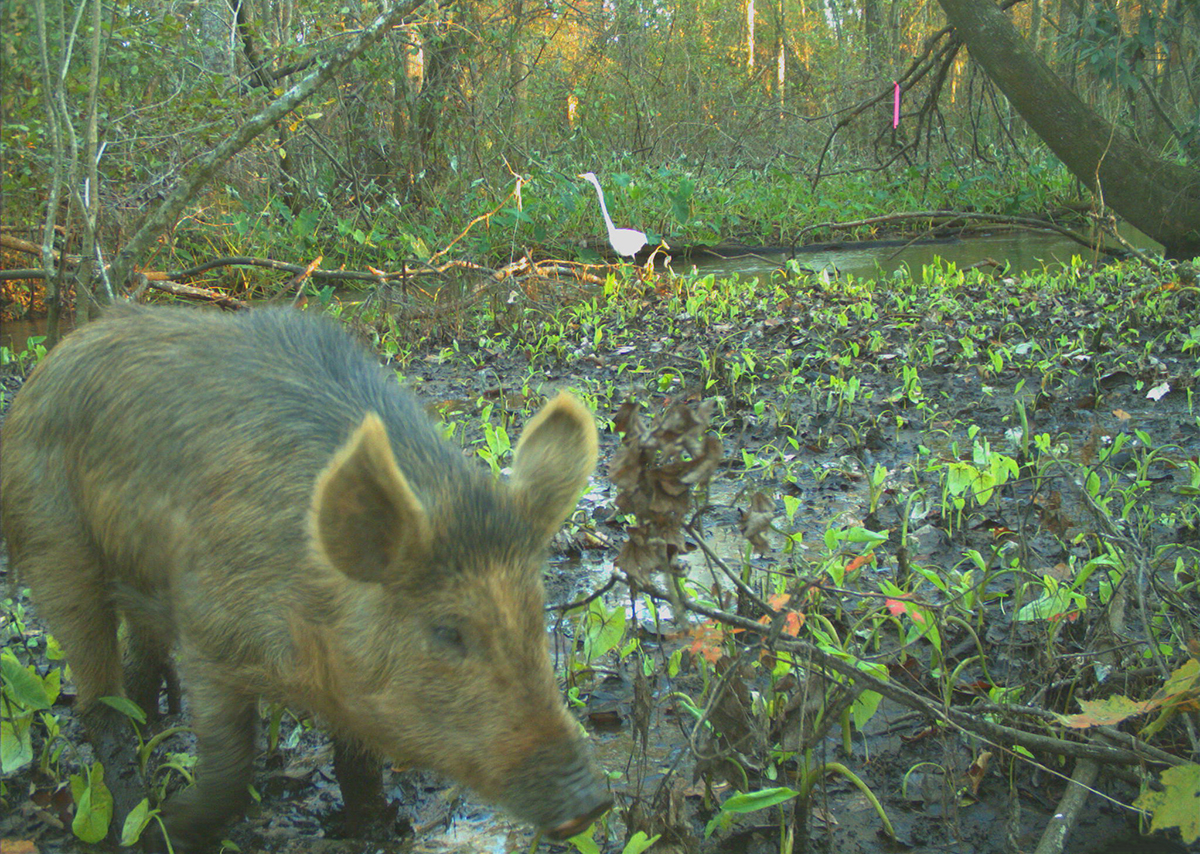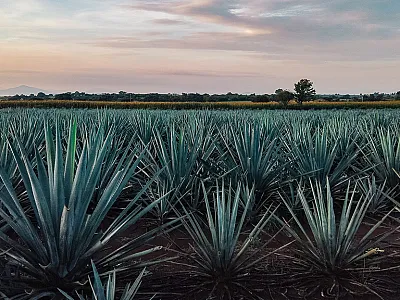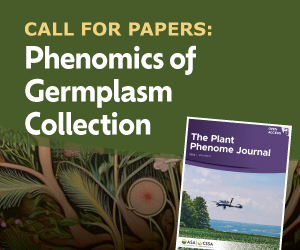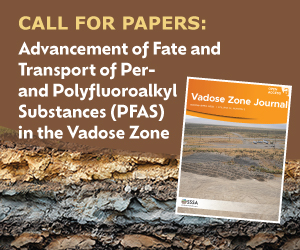Stream pathogenic bacteria levels rebound after wild pig control ends

New research reveals a rapid rebounding of wild pig populations, and associated pathogenic bacteria levels, in affected watersheds after control measures end. Water quality remediation may require ongoing population control efforts.
Wild pigs (Sus scrofa) are one of North America’s most destructive invasive species, causing greater than one billion dollars in damage and control costs annually. Despite spending much of their time in and around waterways, little is known about the disease risk presented by the fecal contamination of streams by wild pigs.
Recent research shows that wild pigs significantly increase the amount of disease-causing bacteria like E. coli in streams and that population control efforts—such as trapping and culling—can be used to reduce these levels. Efforts like this can be extremely costly in labor and time, so a recent study published in the Journal of Environmental Quality evaluated how long water quality improvements last following the conclusion of population control efforts.
Researchers found that concentrations of pathogenic bacteria increased by 746% for E. coli and 159% for fecal coliform in the year following the end of population control efforts to concentrations. This resulted in concentrations that were greater than those at the start of the study by 79% for E. coli and 159% for fecal coliform. When compared with safety guidelines, these concentrations exceeded safe exposure levels more often than they did prior to population control (10% for E. coli and 12% for fecal coliform).
These findings reveal a rapid rebounding of wild pig populations in affected watersheds, likely as a result of the movement of neighboring populations and the rapid reproductive rate of the species. Ultimately, this study suggests that water quality remediation may require ongoing population control efforts.
Dig deeper
Bradley, E. A., Lockaby, B. G., Madere, S., Bolds, S., Kalin, L., Ditchkoff, S. S., & Brown, V. R. (2025). Stream pathogenic bacteria levels rebound post-population control of wild pigs. Journal of Environmental Quality, 54, 359–368. https://doi.org/10.1002/jeq2.70004
Text © . The authors. CC BY-NC-ND 4.0. Except where otherwise noted, images are subject to copyright. Any reuse without express permission from the copyright owner is prohibited.











